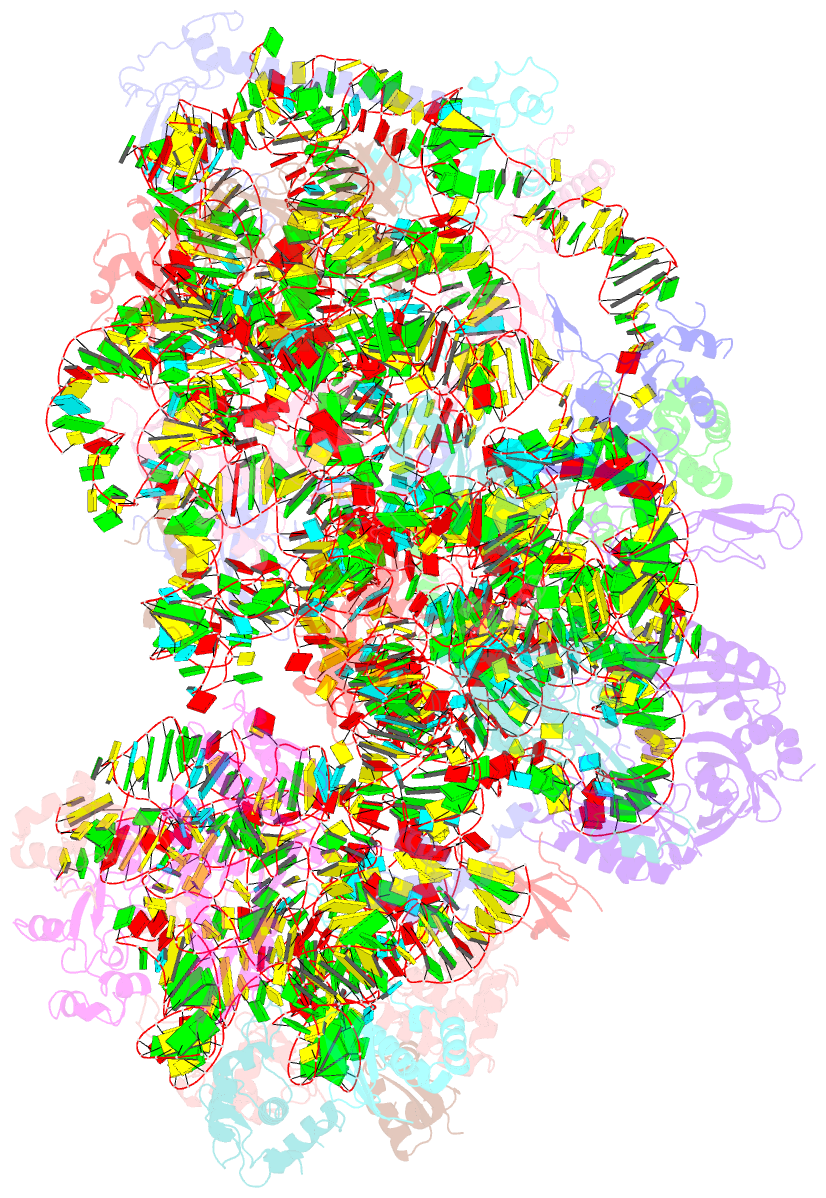Summary information and primary citation
- PDB-id
- 7pwf; SNAP-derived features in text and JSON formats;
DNAproDB
- Class
- ribosome
- Method
- cryo-EM (2.85 Å)
- Summary
- cryo-EM structure of small subunit of giardia lamblia ribosome at 2.9 Å resolution
- Reference
- Hiregange DG, Rivalta A, Bose T, Breiner-Goldstein E, Samiya S, Cimicata G, Kulakova L, Zimmerman E, Bashan A, Herzberg O, Yonath A (2022): "Cryo-EM structure of the ancient eukaryotic ribosome from the human parasite Giardia lamblia." Nucleic Acids Res., 50, 1770-1782. doi: 10.1093/nar/gkac046.
- Abstract
- Giardiasis is a disease caused by the protist Giardia lamblia. As no human vaccines have been approved so far against it, and resistance to current drugs is spreading, new strategies for combating giardiasis need to be developed. The G. lamblia ribosome may provide a promising therapeutic target due to its distinct sequence differences from ribosomes of most eukaryotes and prokaryotes. Here, we report the cryo-electron microscopy structure of the G. lamblia (WB strain) ribosome determined at 2.75 Å resolution. The ribosomal RNA is the shortest known among eukaryotes, and lacks nearly all the eukaryote-specific ribosomal RNA expansion segments. In contrast, the ribosomal proteins are typically eukaryotic with some species-specific insertions/extensions. Most typical inter-subunit bridges are maintained except for one missing contact site. Unique structural features are located mainly at the ribosome's periphery. These may be exploited as target sites for the design of new compounds that inhibit selectively the parasite's ribosomal activity.





